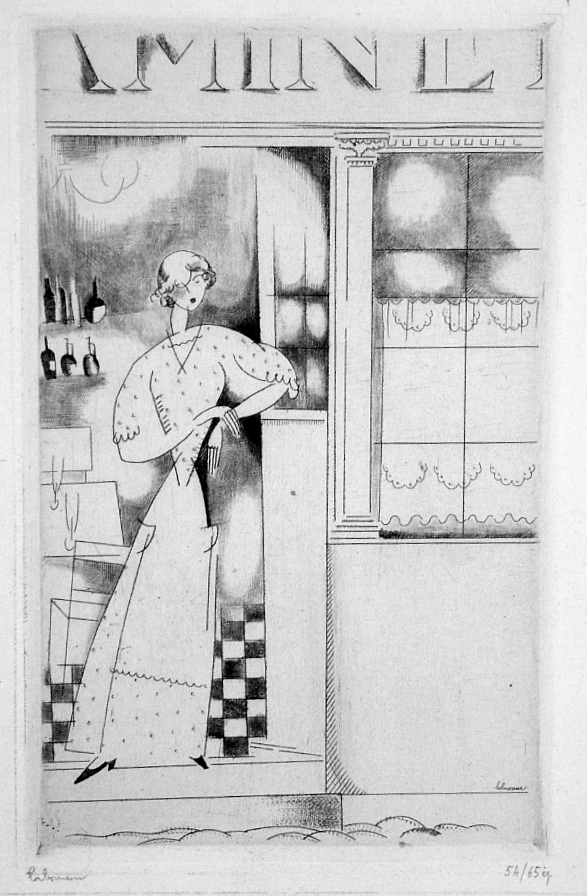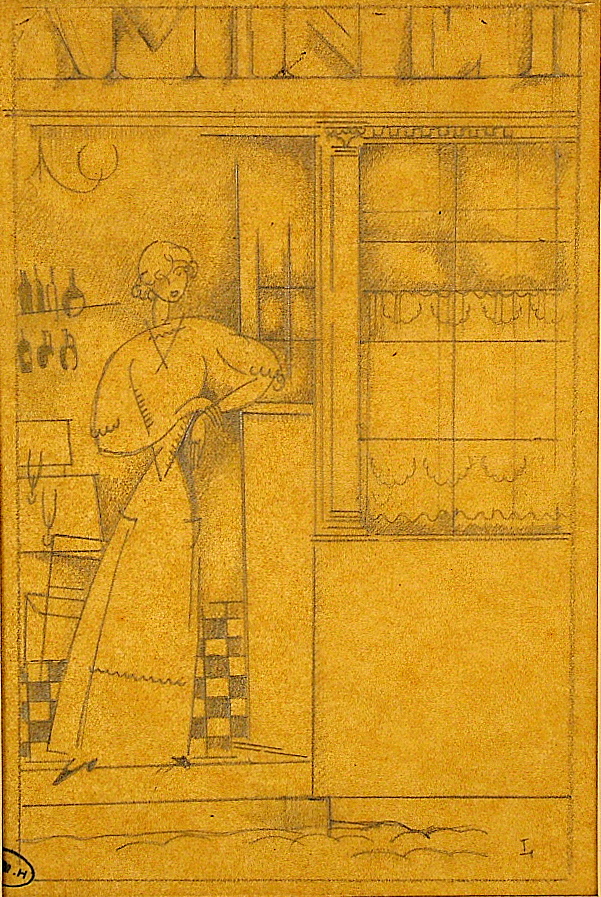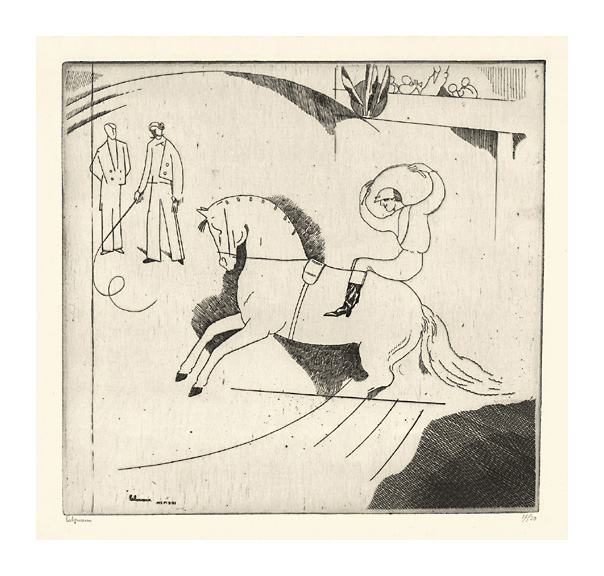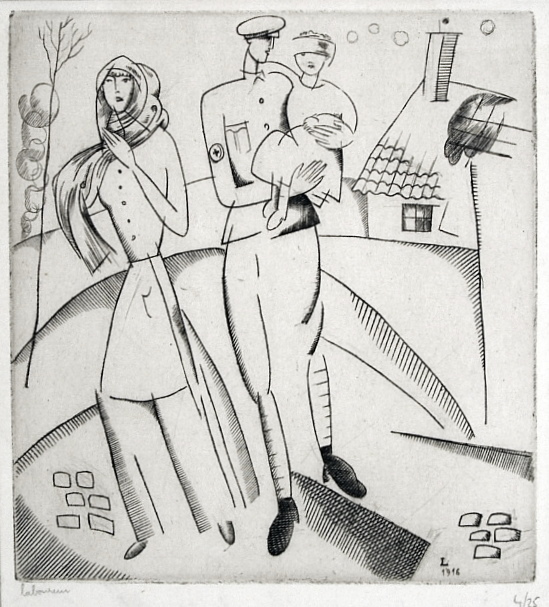La Porte de L'Estaminet – 2 states and the drawing
Tuesday, June 1st, 2010Jean-Emile Laboureur (1877-1943), La Porte de L’Estaminet, etching and roulette, 1925, the preliminary drawing, the etching in the second state (of 3), and the etching in the third state (of 3). Sylvain Laboureur 294; total impressions printed 85. The third state impression is inscribed “imp” lower left and numbered (54/65), also signed lower left, and titled lower in the margin. The second state impression is signed and numbered 7/7. The drawing is initialed in pencil lower right. Each impression and the drawing in good condition. Plate size for the prints: 5 7/8 x 3 3/4 inches, each with wide margins. The drawing is 6 x 3 3/4 inches (the sheet 6 5/8 x 4 5/8 inches). The second and third state impressions are on a cream wove paper, the drawing is on a yellow tracing paper.
Provenance for the second state impression and drawing: Henri Petiet Collection (initials stamp verso; this stamp not in Lugt; cf Lugt 2021a).
In La Porte de L’Estaminet Laboureur introduces a very fine roulette tint for shading around the head of the girl, around the windows, and in the tiles and spaces just behind the girl.
The drawing is a shade higher than the print; the artist draws the last letters of the word “Estaminet” nearly completely in the drawing, but cuts the tops of the letters in the print. He also shaves some of the right hand area shown in the drawing from the print.
La Porte de L’Estaminet is surely one of Laboureur’s most successful and charming small compositions.




